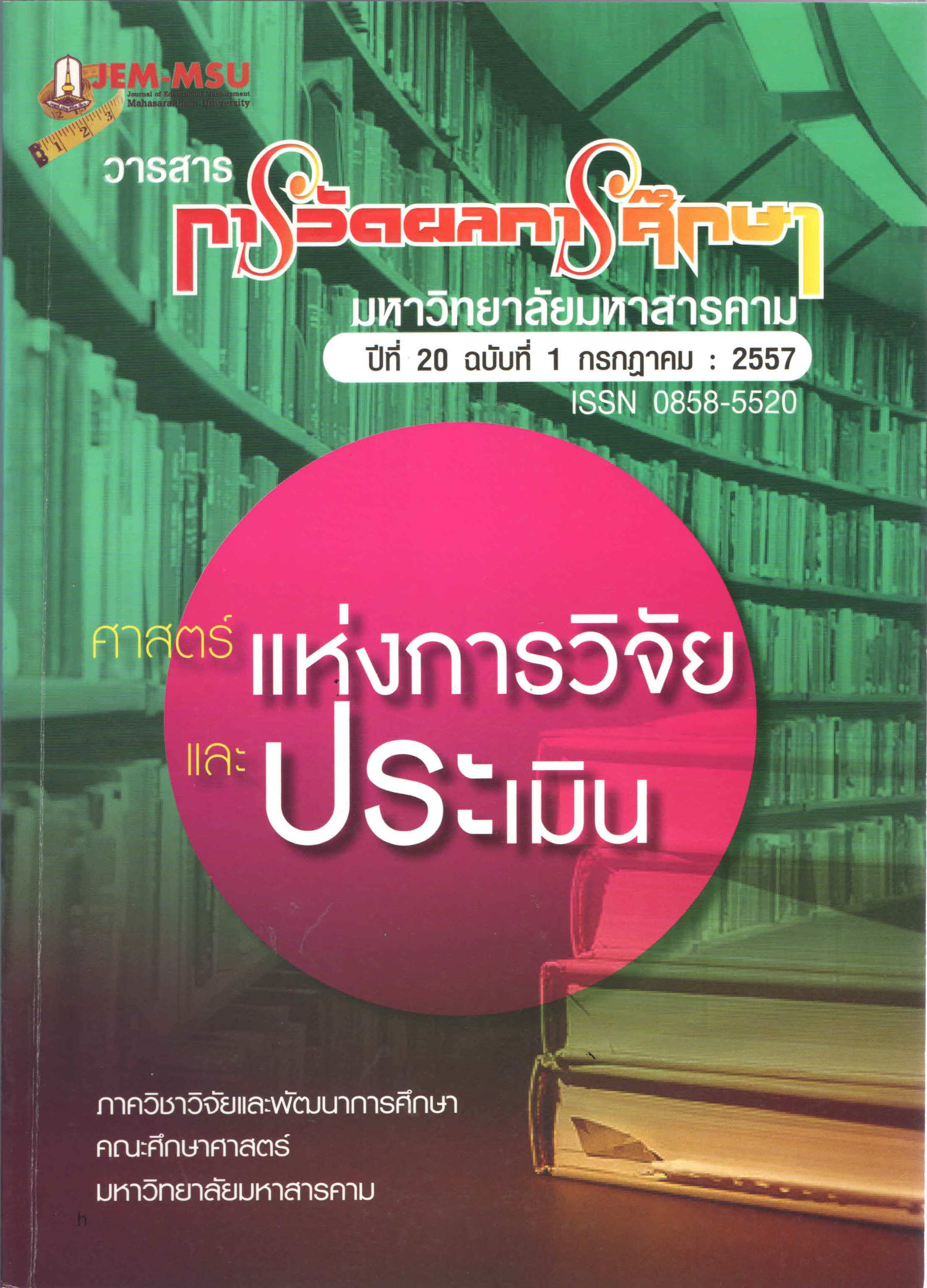A Development of Programs Evaluation Standards
Main Article Content
Abstract
The purpose of this research is 1) to study and synthesize the program
evaluation standards 2) to construct and inspect the quality of program evaluation
standards 3) to test the usage of the program evaluation standards 4) to evaluate
the usage of the program evaluation standards. The researcher conducted
literature review on program evaluation standards in Thailand and overseas,
participated in a focus group discussion, assessed the propriety with connoisseurship,
constructed validity confirmed by factor analysis. The researcher applied metaevaluation to arts and crafts project at Kalasin Primary Educational Service Area
Office 3 in 2012. Then evaluated the program evaluation standards for feasibility,
accuracy and propriety. The results are:
1. The constructed program evaluation standards comprise 5
standards, 35 indicators: 1) Propriety standard, 9 indicators 2) Utility standard, 9
indicators 3) Feasibility standard, 3 indicators 4) Accuracy standard, 12 indicators 5)
Evaluators standard, 5 indicators.
2. All program evaluation standards are of quality. Content validity
ratio (CVR) at 0.80–1.00 range. Propriety average at 3.90–5.00. Construct validity
confirmed by factor analysis. The program evaluation standards model is fit with
empirical data of experienced educational program evaluations (X2 =2.63, df=3,
p=0.45, RMSEA= 0.00, GFI=0.99, AGFI=0.97, RMR=0.01) . The factor loading is
positive, and at .01 significant level with a range between 0.57 and 0.87.
3. The results of the program evaluation standards when applied to
the arts and crafts project at Kalasin Primary Educational Service Area Office 3 in
2012 are at good level for Propriety standard, Feasibility standard, Utility standard,
and Accuracy standard, while Evaluators standard is at a fair level. The evaluators
show no discord in awarding scores in all standards.
4. The evaluation results of the usage of the program evaluation
standards for feasibility, accuracy and propriety are at high level.
Article Details
The content and information contained in the published article in the Journal of Educational Measurement Mahasarakham University represent the opinions and responsibilities of the authors directly. The editorial board of the journal is not necessarily in agreement with or responsible for any of the content.
The articles, data, content, images, etc. that have been published in the Journal of Educational Measurement Mahasarakham University are copyrighted by the journal. If any individual or organization wishes to reproduce or perform any actions involving the entirety or any part of the content, they must obtain written permission from the Journal of Educational Measurement Mahasarakham University.


